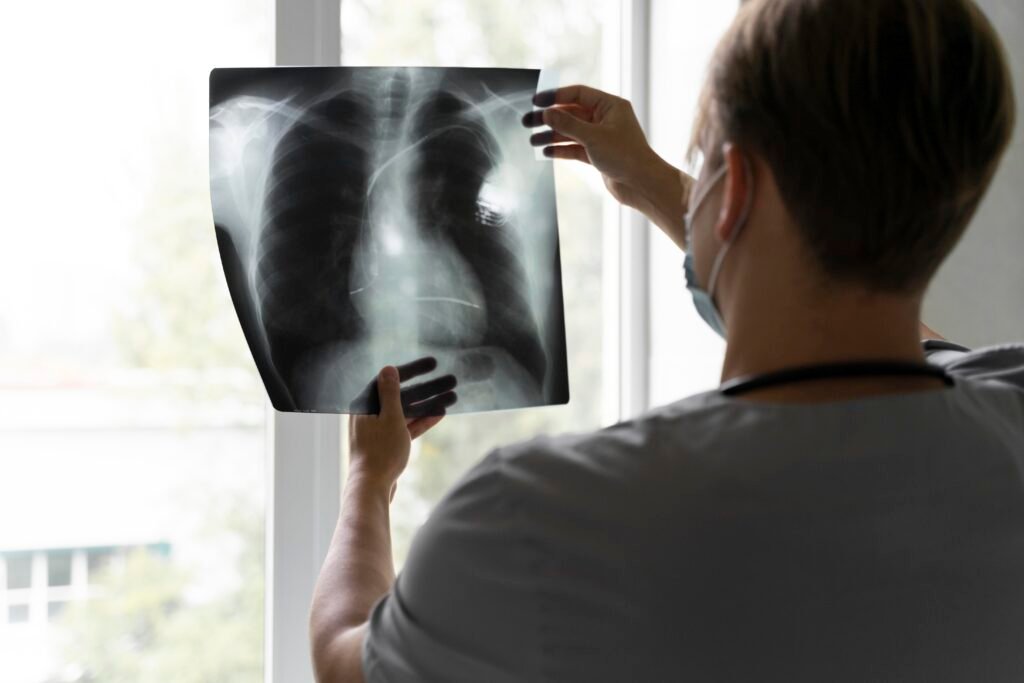Understanding Lung Cancer

Understanding Lung Cancer: Causes, Early Indicators, Diagnostic Techniques, and Therapeutic Strategies
Lung cancer is one of the most lethal and widespread malignancies worldwide, claiming millions of lives each year. It occurs when abnormal cells in the lung tissue grow uncontrollably, forming masses that block airflow and hinder normal respiratory function.
Often called a “silent disease,” lung cancer may remain undetected until it reaches advanced stages, making treatment more challenging. However, by understanding its causes, early symptoms, diagnostic tools, and treatment strategies, we can promote earlier intervention and improve survival rates.
Key Drivers Behind Lung Cancer Development
Lung cancer arises from a complex interplay of environmental exposures, lifestyle habits, and genetic predispositions.
1. Tobacco Consumption
Above all, cigarette smoking remains the primary cause, linked to nearly 85–90% of all cases. Tobacco smoke contains thousands of harmful chemicals, dozens of which are proven carcinogens. The longer and heavier a person smokes, the greater the risk. Even secondhand smoke—inhaled involuntarily—can significantly raise the risk.
2. Industrial and Environmental Toxins
Long-term exposure to substances like asbestos fibers, radon gas, arsenic, and certain industrial chemicals can cause lasting damage to lung cells. Radon is especially dangerous because it is invisible, odorless, and tasteless, often accumulating indoors undetected.
3. Air Pollution
Prolonged inhalation of fine particulate matter from vehicle exhaust, factories, and urban smog has been linked to increased lung cancer rates.
4. Inherited Susceptibility
Having a family history of lung cancer may indicate genetic changes that make lung tissue more vulnerable to abnormal growth.
5. Pre-existing Lung Disorders
Chronic conditions like COPD and pulmonary fibrosis can heighten the risk of lung cancer due to prolonged inflammation and scarring.
Subtle but Significant Early Symptoms
In its early stages, lung cancer often mimics mild respiratory issues, leading many to overlook warning signs. Nevertheless, it is important to watch for:
- Persistent or Changing Cough – Lasting several weeks or changing in tone.
- Shortness of Breath – Even during light activities.
- Unexplained Weight Loss – Without dietary or exercise changes.
- Chest or Back Pain – Worsening with breathing or movement.
- Coughing up Blood (Hemoptysis) – Even small traces require urgent attention.
- Frequent Lung Infections – Recurring pneumonia or bronchitis in the same lung area.
Tip: If any of these symptoms appear and persist, seek medical evaluation promptly.

Diagnostic Pathways for Lung Cancer
Once lung cancer is suspected, doctors use multiple complementary techniques to confirm its presence and assess its spread.
1. Imaging Techniques
- Chest X-ray: Detects abnormal shadows or masses.
- CT Scan: Provides detailed cross-sectional views.
- PET Scan: Identifies areas of high metabolic activity, often signaling cancer spread.
2. Sputum Cytology
Microscopic analysis of mucus coughed up from the lungs can reveal cancer cells.
3. Tissue Biopsy
- Bronchoscopy: A camera-equipped tube examines the lungs internally and collects tissue.
- Needle Aspiration: A fine needle removes samples through the chest wall.
- Surgical Biopsy: Used when other methods are inconclusive.
4. Molecular Analysis
Genetic testing of tumor cells helps identify targetable mutations for personalized treatment.
Principal Types of Lung Cancer
Understanding the two main types helps determine treatment strategy:
- Non-Small Cell Lung Cancer (NSCLC): Represents about 85% of cases; grows more slowly and includes adenocarcinoma, squamous cell carcinoma, and large cell carcinoma.
- Small Cell Lung Cancer (SCLC): Less common but more aggressive, often spreading quickly.
Therapeutic Strategies
Treatment depends on the type, stage, genetic profile, and patient health condition.
1. Surgical Removal
Procedures like lobectomy (removing part of the lung) or pneumonectomy (removing the whole lung) can be curative for localized disease.
2. Radiotherapy
Uses high-energy rays to destroy cancer cells, either before surgery to shrink tumors or after surgery to prevent recurrence.
3. Chemotherapy
Employs powerful drugs to kill cancer cells, often combined with other treatments.
4. Targeted Therapy
Uses precision medicines that block specific cancer cell mechanisms, minimizing harm to healthy tissue.
5. Immunotherapy
Boosts the body’s immune system to detect and destroy cancer cells.
6. Palliative Care
Focuses on symptom relief and quality of life for advanced-stage patients
Reducing Risk and Preventing Disease
While not all lung cancer cases are preventable, certain lifestyle and environmental choices can greatly lower risk:
- Quit Smoking: Stopping at any age reduces risk significantly.
- Avoid Secondhand Smoke: Stay away from smoky environments.
- Test for Radon: Regularly check and fix elevated levels in homes.
- Workplace Safety: Use protective gear when handling hazardous materials.
- Healthy Living: Maintain a balanced diet, exercise regularly, and support lung health.
Conclusion
In summary, lung cancer remains a serious global health threat, but advancements in early detection, genetic testing, and treatment have improved survival outcomes. By recognizing risk factors, spotting early signs, and seeking timely care, individuals can dramatically improve their prognosis. Prevention, vigilance, and rapid intervention are the strongest defenses against this disease.

Aiman Fatima
August 18, 2025Understanding lung cancer is vital because early awareness can truly save lives. Knowing the risk factors, symptoms, and the importance of timely screening empowers people to seek help sooner. Education, prevention, and support for patients and families are key in the fight against this disease.”